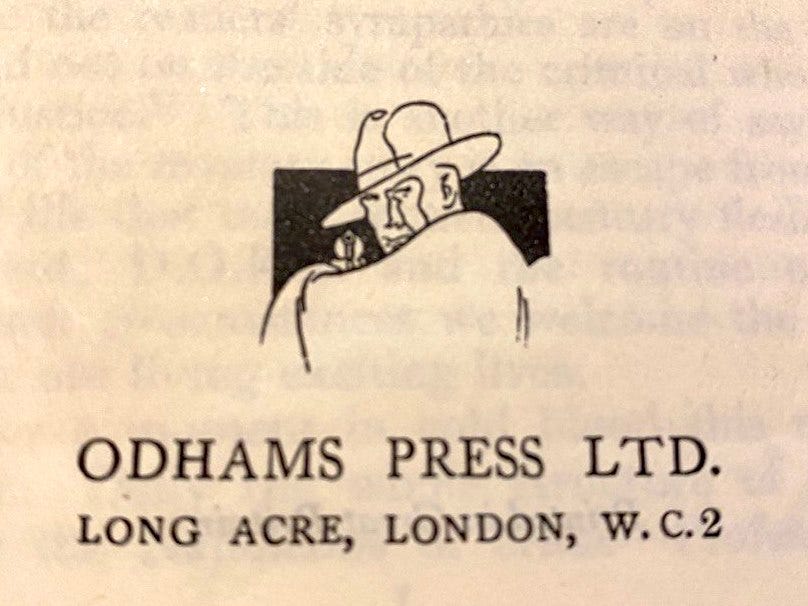Sword, Sorcery and Hair-raising Terror: The ‘Weird’ Illustrations of Ernest Wallcousins
Ernest Wallcousins, photo by Howard Coster, 1926 ©The National Portrait Gallery, London
That old adage a picture is worth a thousand words can never have been more applicable than in the work of the early twentieth-century British illustrator Ernest Charles Wallcousins (1883-1976).
Wallcousins was a graduate of the Westminster School of Art where he had studied under Walter Sickert and he later studied at the Slade School of Fine Art under Henry Tonks. Thus, he was fully aesthetically armed following such a thoroughly classical training, and his subsequent portfolio was proficiently broad, ranging from society portrait paintings and landscapes to archaeological illustrations, to designing posters for the London Underground and even propaganda posters during World War Two (Wallcousins is credited with the graphic design of the now famous and much reproduced ‘Keep Calm and Carry On’ poster).
Working in what was ostensibly a Pre-Raphaelite style, Wallcousins was initially renowned in his day for his book illustrations in Celtic Myth, Legend, Poetry, and Romance, by Charles Squire (1905), and Myths of Babylonia and Assyria, by Donald A. Mackenzie (1915).
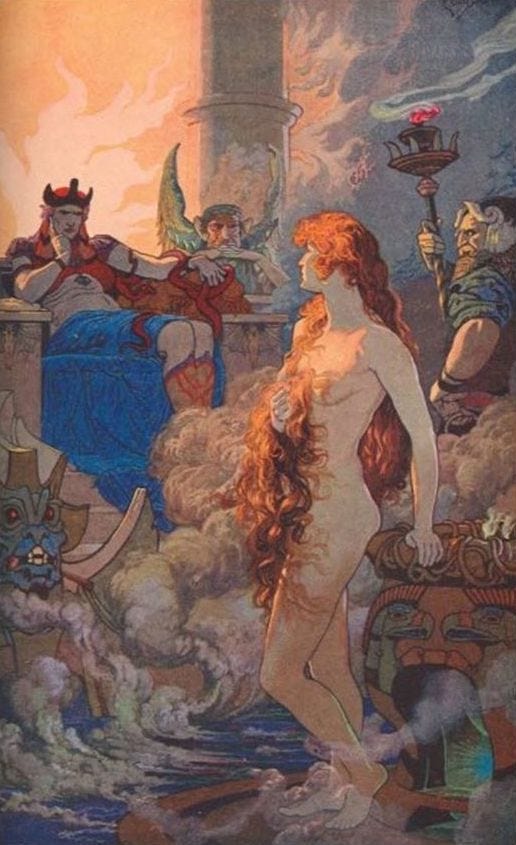
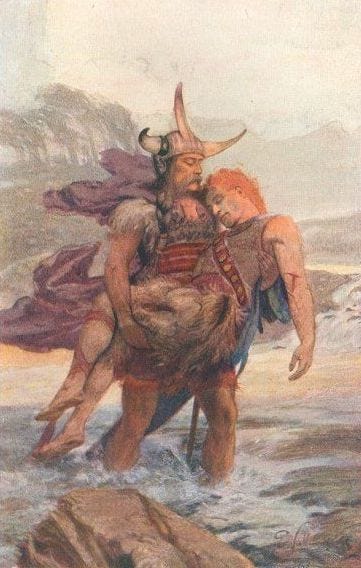
Wallcousins’ work displays all the virtues of the old art school disciplines. With dramatic structure, anatomical accuracy (developed from hours in the life class), and a real sensuality. Although his work is little known today, it was his style of muscular, striding heroes and beautiful women of high romance, that mark him as the precursor of the fantasy illustrators that followed, many of whom were deeply influenced by his creative output.
However, my first introduction to Wallcousins’ work was in a 1934 collection of stories by Odhams Press titled The Mystery Book that had been my grandfather’s and which he subsequently gifted to my juvenile self. The book is a remarkable (though not untypical for its day) anthology of stories of detection, suspense, and horror. It includes such classics of macabre literature as W. W. Jacob’s The Monkey’s Paw, Henry James’ The Turn of the Screw, F. Marion Crawford’s The Upper Berth, the superb hair raisers of E. Bulwer Lytton's The Haunted and the Haunters and M. R. James’ Oh, Whistle and I’ll Come To You, My Lad, and my personal favourite Frederick Marryat’s The Werewolf. But Arthur Conan Doyle, Bram Stoker, Algernon Blackwood, Sax Rohmer, Walter de la Mare, H. G. Wells and of course, Edgar Allan Poe, are all present and (chillingly) correct. When the world’s leisure was accommodated by reading, collections such as this were king.
Wallcousins’ illustration of F. Marion Crawford’s The Upper Berth
The now-defunct Odhams Press of London emerged in a period that also saw the rise of the pulps and Odhams did eclectically dabble with adventure magazines and comics as well as publishing classics of literature that included Austen, Thackeray, and Dickens. But it is their remarkable series of ‘Boys Own’ style books with titles such as The Mystery Book, The Great Book of Humour, and Fifty True Stories Stranger Than Fiction that for me at least, really stand out. What’s more, the illustrations of Wallcousins are prolifically represented throughout many of these editions. And what illustrations they are!
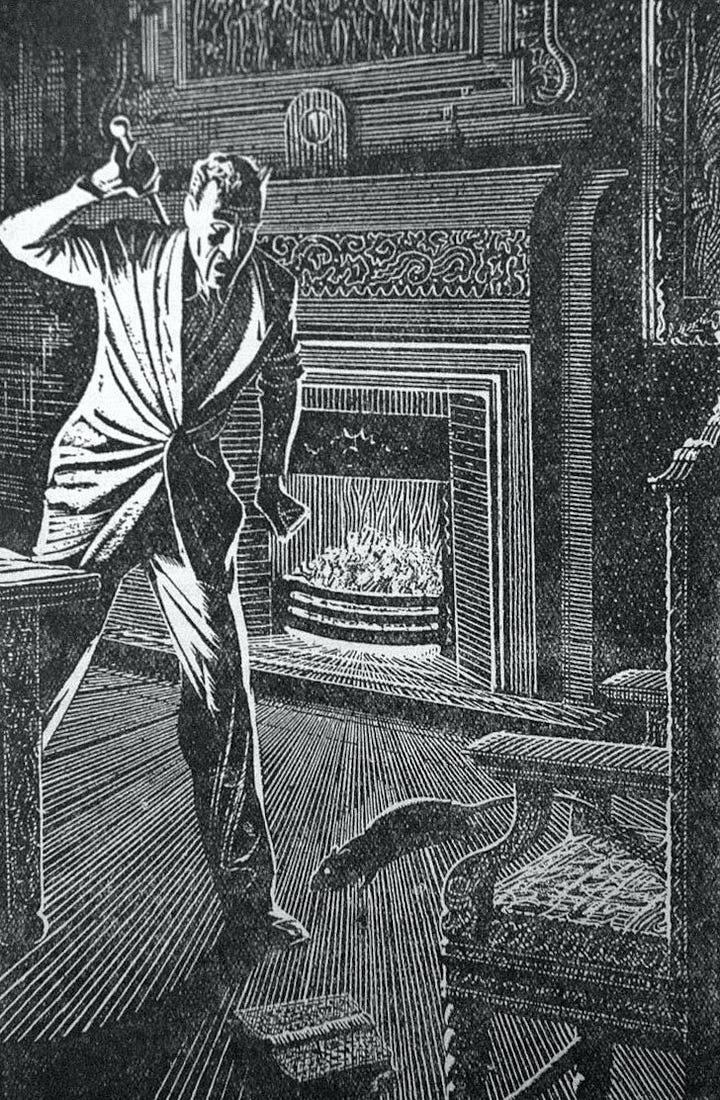
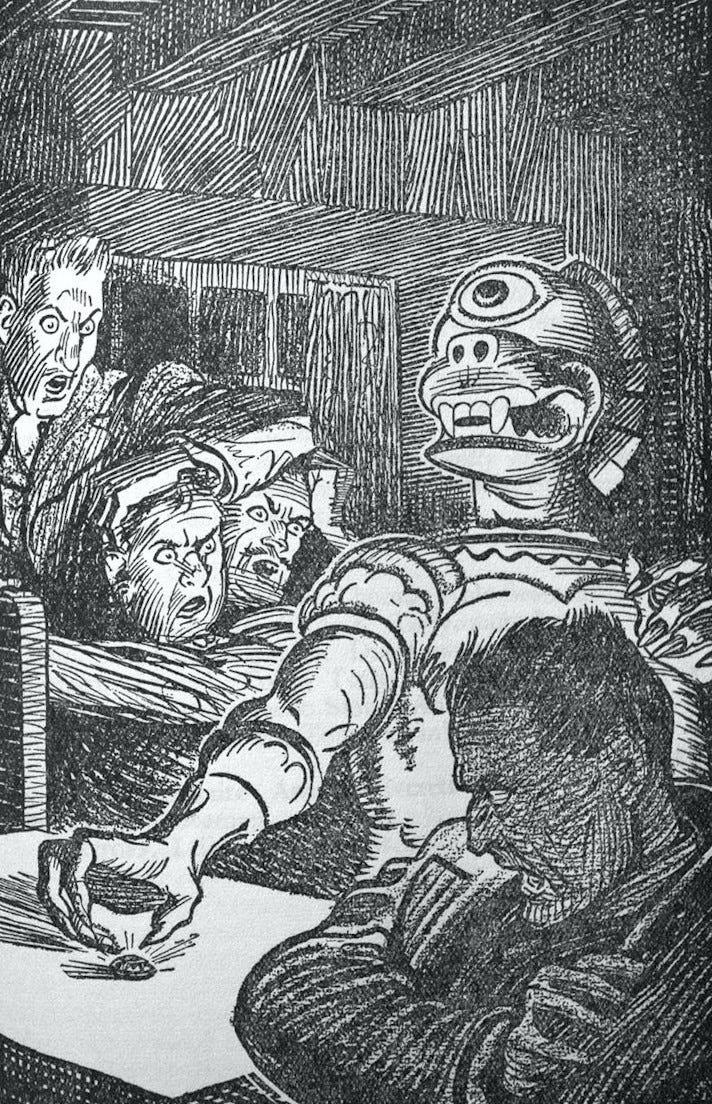
When an illustrator of supreme talent is commissioned to provide images to illustrate macabre literature, the effect on the reader should be, and invariably is, truly memorable. Designed to pepper the volumes with a smorgasbord of chills, thrills, and ghastly visual delights, the talented Wallcousins’ work tantalises the readers with a window into a pictorial conception of the terror held within. And, as these were short stories, they could be picked up and shivered at in succinct, intense doses. The illustrations for these volumes are pared-down conceptions quite different from his earlier output. Indeed, they feel more akin to comic art and graphic novels with their simplified but dramatically effective use of shadow and light, stark areas of white and heavy blacks, and a masterful use of crosshatching and line work.
One image from The Mystery Book, namely Wallcousins’ illustration for M. R. James’ Oh, Whistle and I’ll Come To You, My Lad, stands out as an instructive example of this style.
The grinning sheet-wrapped ghoul, the summoned ‘thing’, grapples with the protagonist, Professor Parkins, on the very windowsill of his room. Quis Est Iste Qui Venit indeed! In the story, as the animated bed sheets become a blind, loping creature that feels its way towards Parkins, the reader is never quite sure whether the professor was physically pushed towards the window or whether it is his own terror that gives the thing its power. But Wallcousins nails that horror in a dark, tangible depiction of a ragged, grinning horror thrusting itself upon the hapless man. And as terrible as the face of the sheeted thing is, it is the shadowed, silhouette of Parkins’ own face, stricken with fright, that resonates. The simplicity of line is supremely employed to present only the barest details in a stark, black-and-white lucidity.
Wallcousins repertoire and reputation have, alas, faded over the years, and, like many of the more obscure pulp writers his place in the tradition of the weird is often overlooked. Indeed, there is little extant information to be found about this talented illustrator today. Happily, the current incarnation of this approach of publishing word and image, combined in a spare but effective manner, is once again evident in the pages of The Bizarchives where the same menu of terror, wonder, and disturbing romance can be found with the complimentary illustrations of talented artists such as Donald Kent and Alan Immerson (to name but two).
Let us hope that in the years to come, the resurrection of a love of reading that requires no chargers, batteries, or electrical connections will continue apace. Books are portable and can travel anywhere, and, unless we are reading in braille, all that is required is a source of light, whether the sun, a lamp, or even a torch under the covers... Then the mind will open that sepulchral doorway into a world of speculation, amazement, and terror, transporting the enraptured reader far from the mundanity of their prosaic surroundings.
And Wallcousins would, I am sure, agree, that we must keep calm and carry on reading, and looking… if we dare.






